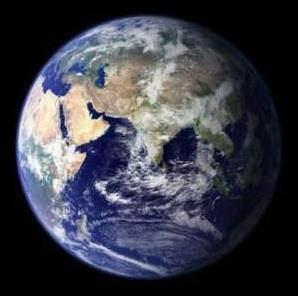July 17, 2013
WASHINGTON: Scientists still have doubts over the theory that Earth arose from the collision of asteroids, as its composition doesn't resemble that of meteoroids — the small particles that break off from asteroids.

July 17, 2013
WASHINGTON: Scientists still have doubts over the theory that Earth arose from the collision of asteroids, as its composition doesn't resemble that of meteoroids — the small particles that break off from asteroids.

Researchers in MIT's Department of Earth, Atmospheric and Planetary Sciences have identified a "hidden flux" of material in the Earth's mantle that would make the planet's overall composition much more similar to that of meteorites.
The Earth's mantle — the layer between the planet's crust and core — is missing an amount of lead found in meteorites whose composition has been analyzed following impact with the Earth.
Much of the Earth is composed of rocks with a high ratio of uranium to lead (uranium naturally decays to lead over time).
However, according to standard theories of planetary evolution, the Earth should harbor a reservoir of mantle somewhere in its interior that has a low ratio of uranium to lead, to match the composition of meteorites.
But such a reservoir has yet to be discovered — a detail that leaves Earth's origins hazy.
Now, researchers in MIT's Department of Earth, Atmospheric and Planetary Sciences have identified a "hidden flux" of material in the Earth's mantle that would make the planet's overall composition much more similar to that of meteorites.
This reservoir likely takes the form of extremely dense, lead-laden rocks that crystallize beneath island arcs, strings of volcanoes that rise up at the boundary of tectonic plates.
As two massive plates push against each other, one plate subducts, or slides, under the other, pushing material from the crust down into the mantle. At the same time, molten material from the mantle rises up to the crust, and is ejected via volcanoes onto the Earth's surface.
According to the MIT researchers' observations and calculations, however, up to 70 per cent of this rising magma crystallizes into dense rock — dropping, lead-like, back into the mantle, where it remains relatively undisturbed.
The lead-heavy flux, they say, puts the composition of the Earth's mantle on a par with that of meteorites.
"Now that we know the composition of this flux, we can calculate that there's tons of this stuff dropping down from the base of the crust into the mantle, so it is likely an important reservoir," Oliver Jagoutz, an assistant professor of geology at MIT, said.
"This has a lot of implications for understanding how the Earth evolved through history," he said.
The study is published in Earth and Planetary Science Letters.
Courtesy: AP















































































































